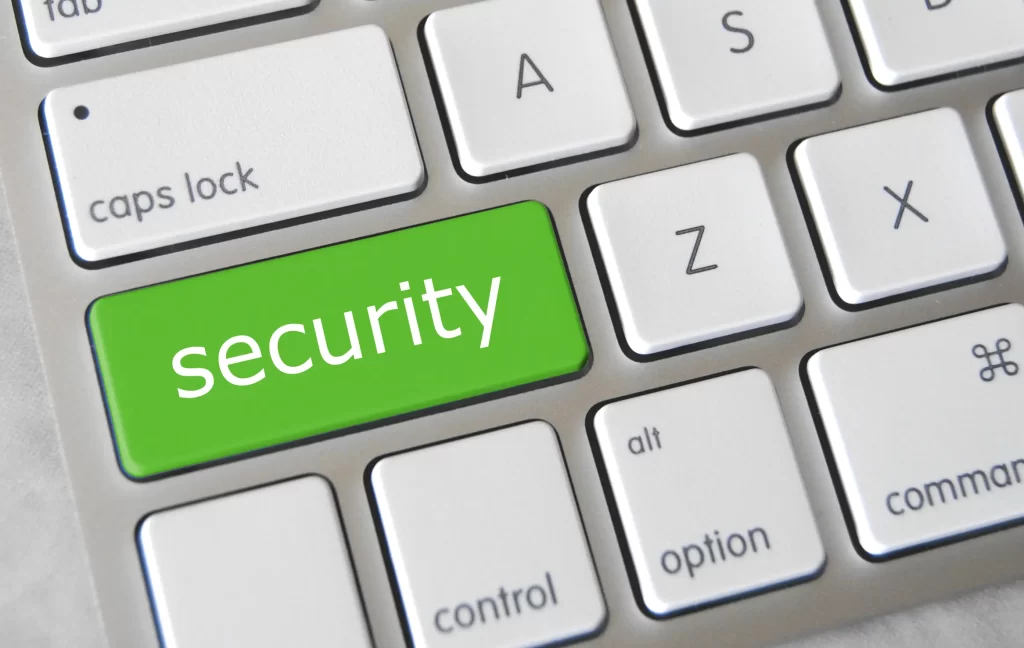វិញ្ញាបនបត្រ Secure Sockets Layer (SSL) គឺជាឆ្អឹងខ្នងនៃសុវត្ថិភាពគេហទំព័រ។ ពួកគេធានាថាទិន្នន័យដែលបានបញ្ជូនរវាងម៉ាស៊ីនមេគេហទំព័រ និងកម្មវិធីរុករកនៅតែជាឯកជន និងរួមបញ្ចូល។ ទោះយ៉ាងណាក៏ដោយ វិញ្ញាបនបត្រទាំងនេះមិនស្ថិតស្ថេរជារៀងរហូតទេ។ ពួកគេផុតកំណត់។ នោះហើយជាកន្លែងដែលតម្រូវការក្នុងការត្រួតពិនិត្យការផុតកំណត់វិញ្ញាបនបត្រ SSL ចូលមកលេង។
ការត្រួតពិនិត្យការផុតកំណត់វិញ្ញាបនបត្រ SSL គឺសំខាន់ណាស់។ វាជួយជៀសវាងការផ្អាកគេហទំព័រដែលមិនបានរំពឹងទុក ការបាត់បង់ទំនុកចិត្តរបស់អតិថិជន និងការផាកពិន័យចំណាត់ថ្នាក់ SEO ដ៏មានសក្តានុពល។ អត្ថបទនេះនឹងពិភាក្សាអំពីឧបករណ៍ និងបច្ចេកទេសសំខាន់ៗ ដើម្បីត្រួតពិនិត្យការផុតកំណត់វិញ្ញាបនបត្រ SSL ប្រកបដោយប្រសិទ្ធភាព។ រង់ចាំនៅពេលយើងស្រាយអាថ៌កំបាំងនៅពីក្រោយវិញ្ញាបនបត្រ SSL និងសារៈសំខាន់នៃការតាមដានកាលបរិច្ឆេទផុតកំណត់របស់ពួកគេ។ តោះចាប់ផ្តើមដំណើរនេះជាមួយ XNUMXByte ដើម្បីទទួលបានវត្តមានឌីជីថលរបស់អ្នក។
សូមចាំថា ស្នាមដេរក្នុងពេលវេលាជួយសង្រ្គោះបានប្រាំបួន។ ដូច្នេះសូមចាប់ផ្តើម!
ការយល់ដឹងអំពីវិញ្ញាបនបត្រ SSL
វិញ្ញាបនបត្រ SSL គឺជាលិខិតឆ្លងដែនឌីជីថលសម្រាប់គេហទំព័រ។ ពួកគេផ្តល់នូវការតភ្ជាប់សុវត្ថិភាពរវាងម៉ាស៊ីនមេគេហទំព័រ និងកម្មវិធីរុករក។ នៅពេលអ្នកតាមដានការផុតកំណត់វិញ្ញាបនបត្រ SSL អ្នកកំពុងធានាថាការតភ្ជាប់ដែលមានសុវត្ថិភាពនេះនៅដដែល។

ចូរបំបែកវាចុះ។ SSL តំណាងឱ្យ Secure Sockets Layer ។ វាជាពិធីការដែលអ៊ិនគ្រីបទិន្នន័យដែលបានផ្ញើតាមអ៊ីនធឺណិត។ ការអ៊ិនគ្រីបនេះធានាថាព័ត៌មានរសើប ដូចជាលេខកាតឥណទាន ឬព័ត៌មានបញ្ជាក់ការចូលគឺមានសុវត្ថិភាពពីការមើលងាយ។
វិញ្ញាបនបត្រ SSL គឺជាឯកសារទិន្នន័យដែលបានបង្ហោះនៅក្នុងម៉ាស៊ីនមេនៃគេហទំព័រ។ វាធ្វើឱ្យការអ៊ិនគ្រីប SSL អាចធ្វើទៅបានដោយការភ្ជាប់អត្តសញ្ញាណគេហទំព័រជាមួយនឹងសោគ្រីប។ នៅពេលដំឡើងនៅលើម៉ាស៊ីនមេ វិញ្ញាបនបត្រនឹងធ្វើឱ្យសោរសោរ និងពិធីការ HTTPS សកម្ម។ វាអនុញ្ញាតឱ្យមានការតភ្ជាប់សុវត្ថិភាពពីម៉ាស៊ីនមេបណ្តាញទៅកម្មវិធីរុករក។
ប៉ុន្តែនេះគឺជាការចាប់។ វិញ្ញាបនបត្រ SSL មានអាយុកាល។ ពួកគេផុតកំណត់។ ហើយនៅពេលដែលពួកគេធ្វើ ការតភ្ជាប់ដែលមានសុវត្ថិភាពដែលពួកគេផ្តល់ឲ្យខូច។ នេះអាចនាំឱ្យមានបញ្ហាគ្រប់ប្រភេទ ចាប់ពីការព្រមានដែលលេចឡើងនៅក្នុងកម្មវិធីរុករកតាមអ៊ីនធឺណិតរបស់អ្នកប្រើប្រាស់ រហូតដល់ការធ្លាក់ចុះនៃចំណាត់ថ្នាក់ម៉ាស៊ីនស្វែងរកគេហទំព័ររបស់អ្នក។
នោះហើយជាមូលហេតុដែលវាមានសារៈសំខាន់ណាស់ក្នុងការត្រួតពិនិត្យការផុតកំណត់វិញ្ញាបនបត្រ SSL ។ ដោយរក្សាភ្នែកលើវិញ្ញាបនបត្រ SSL របស់អ្នក និងកាលបរិច្ឆេទផុតកំណត់របស់វា អ្នកអាចបន្តពួកវាបានទាន់ពេលវេលា និងរក្សាគេហទំព័ររបស់អ្នកឱ្យមានសុវត្ថិភាព។ ដូច្នេះ សូមស្វែងយល់ឱ្យកាន់តែស៊ីជម្រៅអំពីវិធីត្រួតពិនិត្យការផុតកំណត់វិញ្ញាបនបត្រ SSL ប្រកបដោយប្រសិទ្ធភាពនៅក្នុងផ្នែកបន្ទាប់។
FURTHER READING: |
| 1. របៀបបន្តវិញ្ញាបនបត្រ SSL នៅលើ 1Byte |
| 2. ទាញយកវិញ្ញាបនបត្រដែលបានចេញរបស់អ្នកនៅលើ 1Byte |
| 3. របៀបបន្តវិញ្ញាបនបត្រ SSL ដើម្បីធានាសុវត្ថិភាពគេហទំព័ររបស់អ្នក |
ហេតុអ្វីបានជាត្រួតពិនិត្យការផុតកំណត់វិញ្ញាបនបត្រ SSL
ឥឡូវនេះយើងបានយល់ពីអ្វីដែលវិញ្ញាបនបត្រ SSL ជាអ្វីនោះ ចូរយើងស្វែងយល់ពីមូលហេតុដែលវាមានសារៈសំខាន់ក្នុងការត្រួតពិនិត្យការផុតកំណត់នៃវិញ្ញាបនបត្រ SSL ។ រូបភាពនេះ៖ អ្នកបានបង្កើតគេហទំព័រដែលមានសុវត្ថិភាព អ្នកបានដំឡើងវិញ្ញាបនបត្រ SSL ហើយអ្វីៗដំណើរការយ៉ាងរលូន។ ប៉ុន្តែបន្ទាប់មក ចេញពីពណ៌ខៀវ គេហទំព័ររបស់អ្នកចាប់ផ្តើមបង្ហាញការព្រមានអំពីសុវត្ថិភាព។ អតិថិជនរបស់អ្នកមានការព្រួយបារម្ភ ចរាចរណ៍របស់អ្នកធ្លាក់ចុះ ហើយកេរ្តិ៍ឈ្មោះរបស់អ្នកត្រូវរងគ្រោះ។ ទាំងអស់ដោយសារតែវិញ្ញាបនបត្រ SSL របស់អ្នកផុតកំណត់ ហើយអ្នកមិនដឹងអំពីវាទេ។ សេណារីយ៉ូនេះគឺជារឿងធម្មតាជាងអ្វីដែលអ្នកគិតទៅទៀត ហើយវាច្បាស់ណាស់ថាហេតុអ្វីបានជាការត្រួតពិនិត្យការផុតកំណត់វិញ្ញាបនបត្រ SSL មានសារៈសំខាន់ណាស់។ ចូរយើងស្វែងយល់លម្អិតបន្ថែមទៀត។

ផលវិបាកនៃការផុតកំណត់វិញ្ញាបនបត្រ SSL
ចូរស្វែងយល់ពីផលវិបាកនៃការផុតកំណត់វិញ្ញាបនបត្រ SSL ។ នៅពេលដែលវិញ្ញាបនបត្រ SSL ផុតកំណត់ វាអាចនាំឱ្យមានបញ្ហា។ ជាដំបូង និងសំខាន់បំផុត វិញ្ញាបនបត្រដែលផុតកំណត់ធ្វើឱ្យមានការព្រមាននៅក្នុងកម្មវិធីរុករកតាមអ៊ីនធឺណិតរបស់អ្នកប្រើប្រាស់។ ការព្រមាននេះអាចរារាំងអ្នកទស្សនា ដែលនាំឱ្យមានការថយចុះនៃចរាចរណ៍គេហទំព័រ។
លើសពីនេះ វិញ្ញាបនបត្រ SSL ដែលផុតកំណត់អាចបំផ្លាញទំនុកចិត្ត។ វិញ្ញាបនបត្រ SSL មិនត្រឹមតែអ៊ិនគ្រីបទិន្នន័យប៉ុណ្ណោះទេប៉ុន្តែថែមទាំងផ្ទៀងផ្ទាត់អត្តសញ្ញាណនៃគេហទំព័រផងដែរ។ នៅពេលដែលវិញ្ញាបនបត្រផុតកំណត់ វាអាចធ្វើឱ្យអ្នកទស្សនាចោទសួរពីភាពស្របច្បាប់នៃគេហទំព័រ។
ប៉ុន្តែផលប៉ះពាល់មិនឈប់នៅទីនោះទេ។ ម៉ាស៊ីនស្វែងរកដូចជា Google កត្តានៅក្នុងវិញ្ញាបនបត្រ SSL នៅពេលដាក់ចំណាត់ថ្នាក់គេហទំព័រ។ វិញ្ញាបនបត្រដែលផុតកំណត់អាចនាំទៅរកចំណាត់ថ្នាក់ម៉ាស៊ីនស្វែងរកទាបជាង។ នេះអាចកាត់បន្ថយចរាចរណ៍គេហទំព័របន្ថែមទៀត ហើយទីបំផុតប៉ះពាល់ដល់ប្រាក់ចំណូល។
ចុងក្រោយ ទិន្នន័យដែលបានបញ្ជូនតាមការតភ្ជាប់ដែលមិនមានសុវត្ថិភាពគឺងាយរងគ្រោះនឹងការស្ទាក់ចាប់។ នេះអាចនាំឱ្យមានការបំពានទិន្នន័យ ដែលអាចមានផលប៉ះពាល់ផ្នែកច្បាប់ និងហិរញ្ញវត្ថុធ្ងន់ធ្ងរ។
តម្រូវការត្រួតពិនិត្យការផុតកំណត់វិញ្ញាបនបត្រ SSL
ដោយមើលឃើញពីសក្តានុពលនៃវិញ្ញាបនបត្រ SSL ដែលផុតកំណត់ វាច្បាស់ណាស់ថា ការត្រួតពិនិត្យការផុតកំណត់នៃវិញ្ញាបនបត្រ SSL គឺមិនត្រឹមតែមានសារៈសំខាន់ប៉ុណ្ណោះទេ ប៉ុន្តែចាំបាច់ផងដែរ។ វានិយាយអំពីការការពារកេរ្តិ៍ឈ្មោះគេហទំព័ររបស់អ្នក រក្សាការជឿទុកចិត្តរបស់អ្នកចូលមើលរបស់អ្នក និងធានាភាពមើលឃើញនៃគេហទំព័ររបស់អ្នកនៅលើម៉ាស៊ីនស្វែងរក។
ប៉ុន្តែតើមនុស្សម្នាក់រក្សាដាននៃកាលបរិច្ឆេទផុតកំណត់វិញ្ញាបនបត្រ SSL យ៉ាងដូចម្តេច? ជាពិសេសនៅពេលគ្រប់គ្រងគេហទំព័រជាច្រើន ដែលនីមួយៗមានវិញ្ញាបនបត្រផ្ទាល់ខ្លួន កិច្ចការនេះអាចមើលទៅគួរឱ្យខ្លាច។ នេះគឺជាកន្លែងដែលតម្រូវការក្នុងការត្រួតពិនិត្យការផុតកំណត់នៃវិញ្ញាបនបត្រ SSL ចូលមកក្នុងការផ្តោតអារម្មណ៍យ៉ាងខ្លាំង។
តាមរយៈការដំឡើងប្រព័ន្ធមួយដើម្បីត្រួតពិនិត្យការផុតកំណត់នៃវិញ្ញាបនបត្រ SSL អ្នកអាចទទួលបានការជូនដំណឹងបានយ៉ាងល្អមុនកាលបរិច្ឆេទផុតកំណត់។ វាផ្តល់ឱ្យអ្នកនូវពេលវេលាគ្រប់គ្រាន់ដើម្បីបន្តវិញ្ញាបនបត្រ និងជៀសវាងផលវិបាកអវិជ្ជមាននៃវិញ្ញាបនបត្រដែលផុតកំណត់។
ឧបករណ៍ចំនួន 5 សម្រាប់ត្រួតពិនិត្យការផុតកំណត់វិញ្ញាបនបត្រ SSL
ដូច្នេះ អ្នកយល់ពីសារៈសំខាន់នៃការត្រួតពិនិត្យការផុតកំណត់វិញ្ញាបនបត្រ SSL ។ ប៉ុន្តែតើអ្នកទៅវាដោយរបៀបណា? តើអ្នកអាចប្រើឧបករណ៍អ្វីខ្លះ? ផ្នែកនេះនឹងណែនាំអ្នកអំពីឧបករណ៍ចំនួនប្រាំដែលអាចជួយអ្នកត្រួតពិនិត្យការផុតកំណត់វិញ្ញាបនបត្រ SSL ប្រកបដោយប្រសិទ្ធភាព។ ឧបករណ៍នីមួយៗមានលក្ខណៈពិសេស និងគុណសម្បត្តិរបស់វា។ នៅចុងបញ្ចប់នៃផ្នែកនេះ អ្នកនឹងយល់កាន់តែច្បាស់អំពីឧបករណ៍មួយណា ដែលស័ក្កិសមបំផុតសម្រាប់តម្រូវការរបស់អ្នក។ តោះចូលស្វែងរក និងស្វែងយល់ឲ្យបានស៊ីជម្រៅនៃឧបករណ៍ទាំងនេះ។

អធិការវិញ្ញាបនប័ត្រ DigiCert
ឧបករណ៍ទីមួយនៅក្នុងបញ្ជីរបស់យើងគឺ អធិការវិញ្ញាបនបត្រ DigiCert ។ ឧបករណ៍ដ៏មានអានុភាពនេះស្កេនបណ្តាញរបស់អ្នក ស្វែងរកវិញ្ញាបនបត្រ SSL ។ នៅពេលរកឃើញ វាបង្កើតរបាយការណ៍ដ៏ទូលំទូលាយ ដោយផ្តល់នូវទិដ្ឋភាពច្បាស់លាស់នៃទិដ្ឋភាពវិញ្ញាបនបត្ររបស់អ្នក។
ប៉ុន្តែអធិការវិញ្ញាបនប័ត្រ DigiCert មិនឈប់នៅទីនោះទេ។ វាទៅមួយជំហានទៀត ដោយពិនិត្យមើលភាពងាយរងគ្រោះ។ លក្ខណៈពិសេសនេះមានប្រយោជន៍ជាពិសេសព្រោះវាជួយកំណត់ចំណុចខ្សោយដែលអាចកើតមាននៅក្នុងការកំណត់រចនាសម្ព័ន្ធ SSL របស់អ្នក។
លើសពីនេះ ឧបករណ៍នេះអនុញ្ញាតឱ្យអ្នកគ្រប់គ្រងវិភាគទិន្នន័យតាមរយៈរបាយការណ៍ផ្សេងៗ។ របាយការណ៍ទាំងនេះអាចផ្តល់នូវការយល់ដឹងដ៏មានតម្លៃ ជួយអ្នកឱ្យយល់អំពីការដំឡើង SSL របស់អ្នកកាន់តែប្រសើរ។
លក្ខណៈសំខាន់មួយនៃការត្រួតពិនិត្យវិញ្ញាបនបត្រ DigiCert គឺសមត្ថភាពរបស់វាក្នុងការត្រួតពិនិត្យមើលភាពងាយរងគ្រោះទូទៅ។ វិធីសាស្រ្តសកម្មនេះអាចជួយអ្នកឱ្យនាំមុខបញ្ហាសុវត្ថិភាពដែលអាចកើតមាន ដោយធានាថាគេហទំព័ររបស់អ្នកនៅតែមានសុវត្ថិភាព។
ការត្រួតពិនិត្យវិញ្ញាបនប័ត្រ SSL ដោយ ManageEngine
បន្ទាប់នៅក្នុងបញ្ជីរបស់យើងគឺ SSL Certificate Monitor ដោយ ManageEngine ។ ឧបករណ៍នេះគឺជាកន្លែងផ្តល់ថាមពលនៅពេលដែលវាមកដល់ការត្រួតពិនិត្យការផុតកំណត់វិញ្ញាបនបត្រ SSL ។ វាផ្ញើការជូនដំណឹងមុនពេលវិញ្ញាបនបត្រផុតកំណត់ ដោយធានាថាអ្នកតែងតែឈានទៅមុខមួយជំហាន។
ប៉ុន្តែអ្វីដែលកំណត់ SSL Certificate Monitor ដាច់ពីគ្នាគឺភាពបត់បែនរបស់វា។ វាគាំទ្រអ្នកលក់ជាច្រើន ដែលធ្វើឱ្យវាក្លាយជាជម្រើសដែលអាចបត់បែនបានសម្រាប់បរិស្ថានឌីជីថលចម្រុះ។ មិនថាពិធីការអ្វីដែលអ្នកបានប្រើទេ ឧបករណ៍នេះតែងតែពិនិត្យមើលសុពលភាពនៃវិញ្ញាបនបត្រ SSL/TLS របស់អ្នក។
លើសពីនេះទៅទៀត SSL Certificate Monitor មិនត្រឹមតែជាឧបករណ៍ត្រួតពិនិត្យប៉ុណ្ណោះទេ។ វាជាឧបករណ៍គ្រប់គ្រង។ វាអាចគ្រប់គ្រងវិញ្ញាបនបត្រជាច្រើនដោយស្វ័យប្រវត្តិ ដោយកាត់បន្ថយបន្ទុកការងារដោយដៃ និងកាត់បន្ថយហានិភ័យនៃកំហុសរបស់មនុស្ស។
ការធ្វើតេស្តម៉ាស៊ីនមេ SSL ដោយ Qualys SSL Labs
ឧបករណ៍ទីបីនៅក្នុងបញ្ជីរបស់យើងគឺ SSL Server Test ដោយ Qualys SSL Labs ។ នេះគឺជាសេវាកម្មអនឡាញឥតគិតថ្លៃដែលធ្វើការវិភាគស៊ីជម្រៅនៃការកំណត់រចនាសម្ព័ន្ធនៃម៉ាស៊ីនមេបណ្តាញ SSL ណាមួយនៅលើអ៊ីនធឺណិតសាធារណៈ។ វាដូចជាការពិនិត្យសុខភាពសម្រាប់ការកំណត់រចនាសម្ព័ន្ធ SSL នៃគេហទំព័ររបស់អ្នក។
ការធ្វើតេស្តម៉ាស៊ីនមេ SSL ផ្តល់នូវការធ្វើតេស្ត SSL ឥតគិតថ្លៃដ៏ទូលំទូលាយសម្រាប់ម៉ាស៊ីនមេបណ្តាញសាធារណៈរបស់អ្នក។ វាពិនិត្យការកំណត់រចនាសម្ព័ន្ធ SSL របស់ម៉ាស៊ីនមេរបស់អ្នកប្រឆាំងនឹងបញ្ជីវែងនៃបញ្ហាដែលគេស្គាល់ និងការអនុវត្តល្អបំផុត។ លទ្ធផលគឺជារបាយការណ៍លម្អិតដែលផ្តល់ឱ្យអ្នកនូវរូបភាពច្បាស់លាស់នៃសុខភាព SSL របស់ម៉ាស៊ីនមេរបស់អ្នក។
ប៉ុន្តែហេតុអ្វីបានជាវាសំខាន់នៅពេលដែលអ្នកត្រួតពិនិត្យការផុតកំណត់វិញ្ញាបនបត្រ SSL? ដោយសារតែវិញ្ញាបនបត្រ SSL គឺល្អដូចការកំណត់រចនាសម្ព័ន្ធម៉ាស៊ីនមេ ដែលវាជាផ្នែកនៃ។ ទោះបីជាវិញ្ញាបនបត្រ SSL របស់អ្នកត្រឹមត្រូវ និងទាន់សម័យក៏ដោយ ការកំណត់រចនាសម្ព័ន្ធម៉ាស៊ីនមេមិនល្អនៅតែអាចទុកឱ្យគេហទំព័ររបស់អ្នកងាយរងគ្រោះ។
តោះតាមដាន
ឧបករណ៍ទីបួនដែលយើងកំពុងរំលេចគឺ Let's Monitor។ សេវាកម្មនេះគឺមានប្រយោជន៍សម្រាប់ម្ចាស់វិញ្ញាបនបត្រគេហទំព័រ។ វាឥតគិតថ្លៃ និងត្រូវបានរចនាឡើងដើម្បីផ្ញើការដាស់តឿននៅពេលដែលវិញ្ញាបនបត្រជិតដល់កាលបរិច្ឆេទផុតកំណត់របស់ពួកគេ ឬប្រសិនបើពួកវាត្រូវបានកំណត់រចនាសម្ព័ន្ធមិនត្រឹមត្រូវ។
Let's Monitor លេចធ្លោសម្រាប់សមត្ថភាពរបស់ខ្លួនក្នុងការផ្ញើការជូនដំណឹងទៅកាន់ទំនាក់ទំនងច្រើន។ លក្ខណៈពិសេសនេះធានាថាមនុស្សត្រឹមត្រូវនៅក្នុងស្ថាប័នរបស់អ្នកត្រូវបានជូនដំណឹងទាន់ពេលវេលាដើម្បីចាត់វិធានការចាំបាច់។
ប៉ុន្តែអ្វីដែលធ្វើឱ្យ Let's Monitor ពិតជាសកលគឺការប្រើប្រាស់ម៉ាស៊ីនមេដែលចែកចាយទូទាំងពិភពលោក។ ម៉ាស៊ីនមេទាំងនេះត្រួតពិនិត្យវិញ្ញាបនបត្ររបស់អ្នកដើម្បីធានាបាននូវការចូលប្រើប្រាស់ទូទាំងពិភពលោកទៅកាន់គេហទំព័រសុវត្ថិភាពរបស់អ្នក។ មិនថាអ្នកប្រើប្រាស់របស់អ្នកនៅទីណាទេ អ្នកអាចមានទំនុកចិត្តថាពួកគេកំពុងចូលប្រើគេហទំព័រដែលមានសុវត្ថិភាព។
Certbot
ឧបករណ៍ចុងក្រោយដែលយើងកំពុងពិភាក្សាគឺ Certbot ។ ម៉ាស៊ីនភ្ញៀវបន្ទាត់ពាក្យបញ្ជានេះគឺជាកន្លែងថាមពលនៅក្នុងពិភពនៃវិញ្ញាបនបត្រ SSL ។ វាទៅយក និងដាក់ពង្រាយវិញ្ញាបនបត្រឌីជីថលពី Let's Encrypt ដែលជាសិទ្ធិអំណាចវិញ្ញាបនបត្របើកចំហទៅកាន់ម៉ាស៊ីនមេគេហទំព័រ។ នេះធ្វើឱ្យវាជាឧបករណ៍ដែលមិនអាចកាត់ថ្លៃបានក្នុងការត្រួតពិនិត្យការផុតកំណត់វិញ្ញាបនបត្រ SSL ។
Certbot មានលក្ខណៈចម្រុះ។ វាគាំទ្រម៉ាស៊ីនមេគេហទំព័រជាច្រើន ប្រកាន់ខ្ជាប់នូវពិធីការ ACME និងបើកការបញ្ជូនបន្ត HTTPS ។ នេះមានន័យថាវាអាចដំណើរការជាមួយនឹងការរៀបចំ និងការកំណត់ផ្សេងៗ ដែលធ្វើឱ្យវាក្លាយជាជម្រើសដែលអាចបត់បែនបានសម្រាប់បរិស្ថានឌីជីថលចម្រុះ។
ប៉ុន្តែសមត្ថភាពរបស់ Certbot មិនឈប់នៅទីនោះទេ។ វាក៏អាចដើរតួជាអតិថិជនសម្រាប់អាជ្ញាធរវិញ្ញាបនប័ត្រ (CA) ផ្សេងទៀតដែលប្រើពិធីការ ACME ។ លក្ខណៈពិសេសនេះពង្រីកវិសាលភាពរបស់វា ដែលអនុញ្ញាតឱ្យវាបំពេញតម្រូវការវិញ្ញាបនបត្រ SSL កាន់តែទូលំទូលាយ។
បច្ចេកទេសចំនួន 5 សម្រាប់ការត្រួតពិនិត្យការផុតកំណត់វិញ្ញាបនបត្រ SSL
ដោយបានស្វែងរកឧបករណ៍ដើម្បីត្រួតពិនិត្យការផុតកំណត់វិញ្ញាបនបត្រ SSL ឥឡូវនេះ ចូរយើងប្តូរការផ្តោតអារម្មណ៍របស់យើងទៅបច្ចេកទេស។ បច្ចេកទេសទាំងនេះ នៅពេលប្រើដោយភ្ជាប់ជាមួយឧបករណ៍ត្រឹមត្រូវ អាចសម្រួលដំណើរការត្រួតពិនិត្យការផុតកំណត់វិញ្ញាបនបត្រ SSL យ៉ាងសំខាន់។ ពួកគេអាចជួយអ្នកឱ្យនៅពីមុខខ្សែកោង ដោយធានាថាសុវត្ថិភាពនៃគេហទំព័ររបស់អ្នកមិនងាយរងគ្រោះដោយសារតែវិញ្ញាបនបត្រ SSL ដែលផុតកំណត់។ ដូច្នេះ ដោយមិនបាច់ខ្វល់ខ្វាយអ្វីទៀតទេ ចូរយើងស្វែងយល់ពីបច្ចេកទេសទាំងនេះ ហើយស្វែងយល់ពីរបៀបដែលពួកគេអាចធ្វើឱ្យជីវិតរបស់អ្នកកាន់តែងាយស្រួល។

សវនកម្មទៀងទាត់
បច្ចេកទេសដំបូងដើម្បីត្រួតពិនិត្យការផុតកំណត់វិញ្ញាបនបត្រ SSL ប្រកបដោយប្រសិទ្ធភាពគឺធ្វើសវនកម្មជាប្រចាំ។ នេះពាក់ព័ន្ធនឹងការត្រួតពិនិត្យជាប្រចាំនូវវិញ្ញាបនបត្រ SSL របស់អ្នក និងកាលបរិច្ឆេទផុតកំណត់រៀងៗខ្លួន។
សវនកម្មទៀងទាត់ជួយតាមដានរាល់វិញ្ញាបនបត្រ SSL របស់អ្នក។ ពួកគេផ្តល់រូបភាពច្បាស់លាស់ថានៅពេលណាដែលវិញ្ញាបនបត្រនីមួយៗដល់កំណត់សម្រាប់ការបន្ត។ វិធីសាស្រ្តសកម្មនេះអនុញ្ញាតឱ្យអ្នកបន្តវិញ្ញាបនបត្ររបស់អ្នកបានល្អមុនពេលវាផុតកំណត់ ដោយធានាបាននូវសុវត្ថិភាពគេហទំព័រដែលមិនមានការរំខាន។
លើសពីនេះ សវនកម្មទៀងទាត់អាចជួយកំណត់ការកំណត់រចនាសម្ព័ន្ធខុស ឬភាពងាយរងគ្រោះនៅក្នុងការដំឡើង SSL របស់អ្នក។ នេះអាចមានតម្លៃក្នុងការរក្សាសុខភាពទូទៅនៃសុវត្ថិភាពគេហទំព័ររបស់អ្នក។
ការបន្តដោយស្វ័យប្រវត្តិ
ការបន្តដោយស្វ័យប្រវត្តិគឺជាបច្ចេកទេសសំខាន់មួយដើម្បីតាមដានការផុតកំណត់វិញ្ញាបនបត្រ SSL ។ វាជាដំណើរការដែលប្រើឧបករណ៍ដើម្បីបន្តវិញ្ញាបនបត្រ SSL ដោយស្វ័យប្រវត្តិ មុនពេលវាផុតកំណត់។ បច្ចេកទេសនេះគឺជាវិធីសង្គ្រោះជីវិត ជាពិសេសសម្រាប់អាជីវកម្មដែលមានគេហទំព័រច្រើន។
ស្រមៃមើលសេណារីយ៉ូនេះ។ អ្នកកំពុងគ្រប់គ្រងគេហទំព័ររាប់សិប ដែលនីមួយៗមានវិញ្ញាបនបត្រ SSL ផ្ទាល់ខ្លួន។ ការតាមដាន និងបន្តវិញ្ញាបនបត្រនីមួយៗដោយដៃក្លាយជាកិច្ចការដ៏គួរឱ្យភ័យខ្លាច។ នោះហើយជាកន្លែងដែលការបន្តដោយស្វ័យប្រវត្តិចូលមកលេង។
តាមរយៈការដំឡើងការបន្តដោយស្វ័យប្រវត្តិ អ្នកអាចធានាថាគេហទំព័ររបស់អ្នកតែងតែមានសុវត្ថិភាព។ ប្រព័ន្ធនឹងត្រួតពិនិត្យកាលបរិច្ឆេទផុតកំណត់វិញ្ញាបនបត្រ SSL និងចាប់ផ្តើមដំណើរការបន្តតាមតម្រូវការ។ វិធីនេះ អ្នកមិនដែលត្រូវបានការពារដោយវិញ្ញាបនបត្រដែលផុតកំណត់នោះទេ។
លើសពីនេះ ការបន្តដោយស្វ័យប្រវត្តិមិនមែនគ្រាន់តែជាភាពងាយស្រួលនោះទេ។ វានិយាយអំពីការរក្សាទំនុកចិត្តជាមួយអ្នកចូលមើលគេហទំព័ររបស់អ្នក។ វិញ្ញាបនបត្រ SSL ដែលផុតកំណត់អាចនាំឱ្យមានការព្រមាន ឬរារាំងការចូលប្រើ ដែលអាចរារាំងអ្នកទស្សនា។
ជូនដំណឹង
ការដាស់តឿនបម្រើជាបច្ចេកទេសសំខាន់មួយដើម្បីតាមដានការផុតកំណត់វិញ្ញាបនបត្រ SSL ។ ពួកវាដំណើរការជាឆ្មាំឌីជីថលរបស់អ្នក ដោយរក្សាការប្រុងប្រយ័ត្នលើសុពលភាពនៃវិញ្ញាបនបត្រ SSL របស់អ្នក។
ការដាស់តឿនទាំងនេះអាចត្រូវបានបង្កើតឡើង ដើម្បីជូនដំណឹងដល់អ្នកតាមរយៈបណ្តាញផ្សេងៗ។ វាអាចជាអ៊ីមែល សារជាអក្សរ ឬសូម្បីតែការជូនដំណឹងរុញនៅលើទូរស័ព្ទរបស់អ្នក។ ជម្រើសអាស្រ័យលើអ្វីដែលដំណើរការល្អបំផុតសម្រាប់អ្នក។
ប៉ុន្តែហេតុអ្វីបានជាការដាស់តឿនមានសារៈសំខាន់ដូច្នេះ? ជាការប្រសើរណាស់ ពួកគេជួយរក្សាភាពសុចរិតនៃគេហទំព័ររបស់អ្នក។ វិញ្ញាបនបត្រ SSL ដែលផុតកំណត់អាចនាំឱ្យបាត់បង់ទំនុកចិត្តក្នុងចំណោមអ្នកទស្សនារបស់អ្នក។ ការដាស់តឿនជួយអ្នកឱ្យជៀសផុតពីស្ថានភាពបែបនេះ។
ការគ្រប់គ្រងកណ្តាល
ការគ្រប់គ្រងកណ្តាលគឺជាបច្ចេកទេសសំខាន់មួយដើម្បីត្រួតពិនិត្យការផុតកំណត់វិញ្ញាបនបត្រ SSL ។ វានិយាយអំពីការមានវេទិកាបង្រួបបង្រួមតែមួយដែលគ្រប់គ្រងវិញ្ញាបនបត្រ SSL របស់អ្នក។
ហេតុអ្វីការគ្រប់គ្រងកណ្តាលមានសារៈសំខាន់? វានាំមកនូវប្រសិទ្ធភាព និងភាពត្រឹមត្រូវដល់ដំណើរការ។ អ្នកមានទិដ្ឋភាពទូទៅច្បាស់លាស់នៃវិញ្ញាបនបត្រ SSL របស់អ្នកទាំងអស់។ អ្នកអាចរកឃើញបញ្ហាណាមួយបានយ៉ាងឆាប់រហ័ស និងចាត់វិធានការភ្លាមៗ។
លើសពីនេះទៅទៀត ការគ្រប់គ្រងកណ្តាលកាត់បន្ថយហានិភ័យនៃកំហុសរបស់មនុស្ស។ វាងាយស្រួលក្នុងការមើលរំលងវិញ្ញាបនបត្រ SSL នៅពេលអ្នកកំពុងគ្រប់គ្រងពួកវាជាលក្ខណៈបុគ្គល។ ប៉ុន្តែជាមួយនឹងប្រព័ន្ធមជ្ឈិម គ្មានអ្វីរអិលតាមស្នាមប្រេះឡើយ។
ឯកសារ
ឯកសារត្រឹមត្រូវគឺជាបច្ចេកទេសសំខាន់មួយដើម្បីត្រួតពិនិត្យការផុតកំណត់វិញ្ញាបនបត្រ SSL ។ វាដើរតួនាទីជាផែនទីបង្ហាញផ្លូវ ណែនាំអ្នកឱ្យឆ្លងកាត់ដំណើរការ។ ចូរយើងស្វែងយល់ពីសារៈសំខាន់របស់វា។
ទីមួយ ឯកសារផ្តល់នូវទិដ្ឋភាពទូទៅច្បាស់លាស់នៃវិញ្ញាបនបត្រ SSL ទាំងអស់ដែលកំពុងប្រើប្រាស់។ វារួមបញ្ចូលព័ត៌មានលម្អិតដូចជា កាលបរិច្ឆេទចេញ កាលបរិច្ឆេទផុតកំណត់ និងអាជ្ញាធរចេញប័ណ្ណ។ ព័ត៌មាននេះមានសារៈសំខាន់ក្នុងការត្រួតពិនិត្យការផុតកំណត់វិញ្ញាបនបត្រ SSL ប្រកបដោយប្រសិទ្ធភាព។
ទីពីរ វាជួយក្នុងការរៀបចំផែនការយុទ្ធសាស្រ្តបន្ត។ ជាមួយនឹងឯកសារកាលបរិច្ឆេទផុតកំណត់ អ្នកអាចកំណត់ការរំលឹក ឬកំណត់ពេលបន្តដោយស្វ័យប្រវត្តិ។ វិធីសាស្រ្តសកម្មនេះការពារការប្រញាប់ប្រញាល់នៅនាទីចុងក្រោយ និងពេលវេលារងចាំគេហទំព័រដ៏មានសក្តានុពល។
ជាចុងក្រោយ ឯកសារជួយរក្សាការអនុលោមតាមច្បាប់។ ឧស្សាហកម្មជាច្រើនទាមទារភស្តុតាងនៃការគ្រប់គ្រងវិញ្ញាបនបត្រ SSL សម្រាប់គោលបំណងបទប្បញ្ញត្តិ។ ការមានឯកសាររៀបចំយ៉ាងល្អអាចសម្រួលដំណើរការនេះ។
សន្និដ្ឋាន
ការត្រួតពិនិត្យការផុតកំណត់វិញ្ញាបនបត្រ SSL មិនមែនជាកិច្ចការដ៏គួរឱ្យភ័យខ្លាចទៀតទេ។ ជាមួយនឹងឧបករណ៍ និងបច្ចេកទេសត្រឹមត្រូវ វាក្លាយជាដំណើរការដែលអាចគ្រប់គ្រងបាន និងមានប្រសិទ្ធភាព។ គន្លឹះសំខាន់គឺរក្សាភាពសកម្ម ប្រើស្វ័យប្រវត្តិកម្មតាមដែលអាចធ្វើបាន និងរក្សាឯកសារត្រឹមត្រូវ។
សូមចងចាំថា គោលដៅគឺដើម្បីធានាសុវត្ថិភាព និងភាពជឿជាក់នៃគេហទំព័ររបស់អ្នក។ តាមរយៈការត្រួតពិនិត្យការផុតកំណត់វិញ្ញាបនបត្រ SSL ប្រកបដោយប្រសិទ្ធភាព អ្នកកំពុងបោះជំហានដ៏សំខាន់មួយឆ្ពោះទៅរកការសម្រេចបាននូវគោលដៅនេះ។ ដូច្នេះ កុំរង់ចាំរហូតដល់ហួសពេល។ ចាប់ផ្តើមអនុវត្តយុទ្ធសាស្រ្តទាំងនេះនៅថ្ងៃនេះ ហើយធ្វើឱ្យគេហទំព័ររបស់អ្នកក្លាយជាកន្លែងសុវត្ថិភាពសម្រាប់អ្នកទស្សនារបស់អ្នក។

